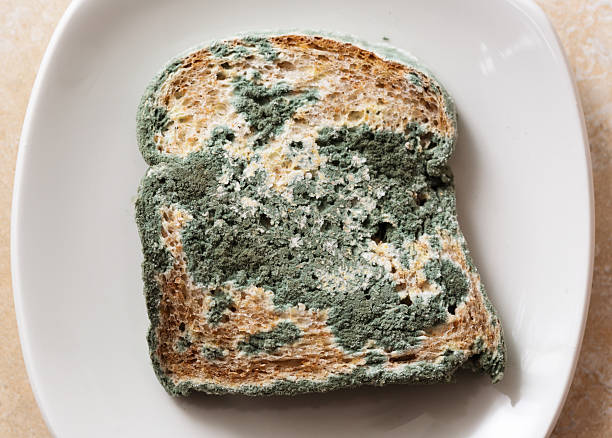
Posted on 06/06/2025 1:10:34 PM PDT by Red Badger
A piece of bread baked millennia ago was recently unearthed in Turkey — and now a local bakery is recreating it.

Scientists recently uncovered an ancient bread recipe in Turkey, and a local bakery has successfully brought it back to life. The bread, dating back roughly 5,000 years, was discovered as a piece of charred loaf buried beneath the threshold of a house in Eskisehir, a city in central Turkey.
Archaeologists found this remarkable artifact in September 2024 during an excavation at Kulluoba Hoyuk, a Bronze Age settlement that has been studied for decades.
An Ancient Discovery Preserved Through Millennia
The piece of bread is the oldest baked bread ever found in an archaeological dig and has retained much of its original shape. Murat Turkteki, the archaeologist leading the excavation, described it as “the oldest baked bread to have come to light during an excavation, and it has largely preserved its shape.” The bread is flat and disc-shaped, measuring about 5 inches (12.7 centimeters) in diameter.
According to Gizmodo, scientific analysis revealed the bread was made from coarsely ground emmer flour, an ancient variety of wheat once widely cultivated but now rare. Alongside emmer, lentil seeds were mixed in, adding texture and nutritional value. The bread also contained a plant leaf that acted as a natural leavening agent, causing the dough to rise during baking. This combination shows early ingenuity in using available resources for food preparation.
Such findings provide important clues about ancient diets, agricultural practices, and how early humans adapted to their environment. Discoveries like this help rewrite the history of food, showing that complex baking existed long before modern techniques were developed.
Recreating A Lost Recipe For Modern Tastes
Inspired by the archaeological find, local officials reached out to Halk Ekmek, a bakery in Eskisehir, to see if the recipe could be recreated for modern palates. Since ancient emmer seeds are no longer available in Turkey, the bakers substituted Kavilca wheat—a closely related and locally grown variety. To mimic the original recipe more closely, bulgur and lentils were added as well.
The bakery’s efforts quickly paid off. The first batch of “Kulluoba bread” sold out within hours, signaling a strong local appetite for this taste of history. Since then, the bakery has been producing around 300 loaves daily to keep up with demand.
The bread is priced affordably, at just 50 Turkish lira (about $1.30), thanks to municipal subsidies aimed at promoting cultural heritage and sustainable food traditions.
5,000-year-old bread rises again.
In the early Bronze Age, a piece of bread was buried beneath the threshold of a house in what is today central Turkey. Now, more than 5,000 years later, archaeologists have unearthed it, and helped a local bakery to recreate the recipe — with… pic.twitter.com/eJhym0WvEF
— AFP News Agency (@AFP) May 28, 2025
A Lesson From Ancestors In Sustainable Farming
Kavilca wheat, used as a substitute for ancient emmer, is known for its resistance to drought and disease. This characteristic is particularly relevant today as many modern crops in Turkey, such as corn and sunflowers, require large amounts of water and are vulnerable to environmental stress.
Eskisehir’s mayor, Ayse Unluce, pointed out the broader significance of this discovery, saying, “Our ancestors are teaching us a lesson. Like them, we should be moving toward less thirsty crops.” With climate change increasing the frequency of droughts, adopting crops like Kavilca wheat could reduce water consumption and ensure food security in vulnerable regions.
Since March 28, the bread has been displayed at the Eskişehir Archaeological Museum, attracting visitors who want to witness this rare piece of history firsthand.


- the NYS tyrants believed the Annual method was bad and forced them to change it -
Interesting! What is the Annual Method?
They did grow figs and grapes, yes? I know these fruits have a yeast on them, maybe the leaves as well?
You are right. Emmer wheat is available, also known as Farro, also available. They made a choice to use something else to make a political statement about “climate change”.
So basically, an old loaf was discovered and they used other ingredients but made it in roughly the same shape using modern bakery tech and called it a replica.
Ok.
“What is the Annual Method?”
LOL! I have no idea, but Autocorrect does.
I meant “Amish”.
LOL! Sounds intriguing though, doesn’t it?
Is the Amish Method just sourdough, I wonder?
I could see The People’s Republic of New York putting their Nannies on that and stopping it.
Been 4 years and still not sorry I moved out there.
“Is the Amish Method just sourdough, I wonder?”
Not much like sourdough, except there’s a “mother” with both.
I lived in AK for 20 years, and my aunt made sourdough bread all the time. Salt rising has a very distinctive flavor and texture — and smell for sure.
She made sour dough, pulled it out of the oven, burned herself, and then promptly dropped it on the floor.
I picked it up and blowed it off. FLOOR BREAD! :D
Thanks for that, I’ll do some looking :)
I’ve had a sourdough starter going for 2 years, with a goal of keeping it “not too sour”.
Some historical books I read talk about salt bread but I never bothered to look up modern day methods for it.
My kitchen is my lab and my playground, I’ll look it up and give it a try.
No, but Pfizer might........
My wife’s first attempt at biscuits in 1979 could have been used by the NHL...................
Disclaimer: Opinions posted on Free Republic are those of the individual posters and do not necessarily represent the opinion of Free Republic or its management. All materials posted herein are protected by copyright law and the exemption for fair use of copyrighted works.